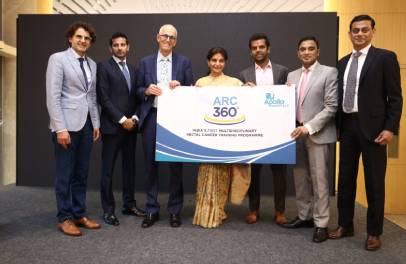Reverse Shoulder Replacement
What is Reverse Shoulder Replacement?
Reverse shoulder replacement is an innovative surgical procedure designed to alleviate severe shoulder pain and improve mobility. Unlike traditional shoulder replacements, this technique ‘reverses’ the normal anatomy of the shoulder, allowing the deltoid muscle (muscle that forms the rounded contour of the shoulder) to take over the function of the damaged rotator cuff. This approach provides significant relief and improved functionality for patients suffering from debilitating shoulder conditions.
Why is Reverse Shoulder Replacement done?
Reverse shoulder replacement is performed for patients with:
- Severe shoulder arthritis leading to intense pain and limited movement.
- Severe rotator cuff tears that cannot be repaired through other means.
- Previous unsuccessful shoulder surgery.
- Complex fractures that cannot be repaired with conventional methods.
What happens during Reverse Shoulder Replacement?
The procedure will be performed under general anaesthesia. The procedure involves removing the damaged parts of your shoulder and replacing them with artificial components. The ‘reverse’ configuration changes the mechanics of the shoulder, allows the deltoid muscle to compensate for the deficient rotator cuff. With 3D planning, the entire process is mapped out in advance to ensure accuracy.
How long will it take?
Your orthopaedic surgeon will discuss with you about the procedure and the mode of sedation for the surgery. The entire surgery will take approximately 2 to 3 hours depending upon your condition.
What happens after the procedure?
After surgery, your vital signs will be monitored and you will be given pain management medications. Post-operative X-rays will be done. Your shoulder will be in an immobilizer this is to prevent movement while the shoulder heals.
Your length of stay in the hospital will depend upon your recovery; typically, it will be for a few days for post-operative care and initial rehabilitation. The recovery process usually takes a few months. Physical therapy sessions are advised to regain strength and mobility in the shoulder. Most patients can return to their normal activities within six months.
Apollo expertise in the procedure
Apollo Hospitals brings the most advanced Orthopedic surgical expertise to all its patients. Our Orthopedic Surgeons have extensive training and experience ensure that patients receive the highest standards of treatment in combination with state-of-the-art techniques. The integration of 3D planning technology in treatment underscores the commitment to achieve the best possible outcomes for patients.
Get In Touch
To book an appointment with our Orthopedic Surgeon, click here
FAQs
What is the role of 3D planning in reverse shoulder replacement?
The use of 3D planning technology is one of the most recent developments in reverse shoulder replacement procedure. Before the surgery, a CT scan of the shoulder is performed, and the entire surgical plan is created virtually. This allows for:
- Precise Component Placement: The 3D planning ensures that the components are placed perfectly, tailored to each patient’s unique anatomy.
- Higher Success Rates: With precise planning, the success rates of the surgery are significantly increased, leading to better outcomes for patients.
- Improved Safety: The virtual plan helps to identify any potential issues beforehand, making the surgery safer and more effective.
Is the surgery safe?
Yes, the surgery is safe. Like any surgical procedure, it carries some risks, but the benefits often outweigh these risks for those suffering from severe shoulder pain and immobility. The use of 3D planning further enhances the safety of the procedure.
How are the outcomes?
Reverse shoulder replacement has shown promising results, offering significant improvements in pain relief and shoulder function. Patients typically experience:
- Reduced Pain: Most patients report substantial pain relief following the surgery.
- Improved Mobility: Enhanced shoulder movement allows patients to perform daily activities with greater ease.
- Increased Strength: The use of the deltoid muscle compensates for the damaged rotator cuff, restoring strength to the shoulder.
UPDATED ON 03/09/2024
Apollo Highlights & Updates
 Apollo Hospitals takes up a 4.5-Hour Stroke Treatment Promise with Advanced Stroke Care Network with Extended 24-Hour Tr...
Apollo Hospitals takes up a 4.5-Hour Stroke Treatment Promise with Advanced Stroke Care Network with Extended 24-Hour Tr...© Copyright 2024. Apollo Hospitals Group. All Rights Reserved.
 +91 8069991061
Book Health Check-up
+91 8069991061
Book Health Check-up








